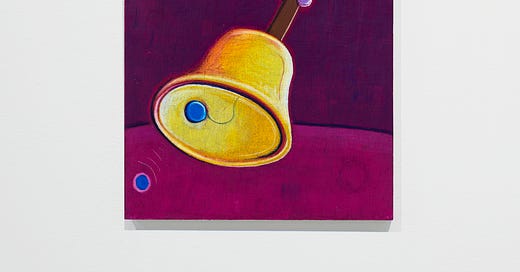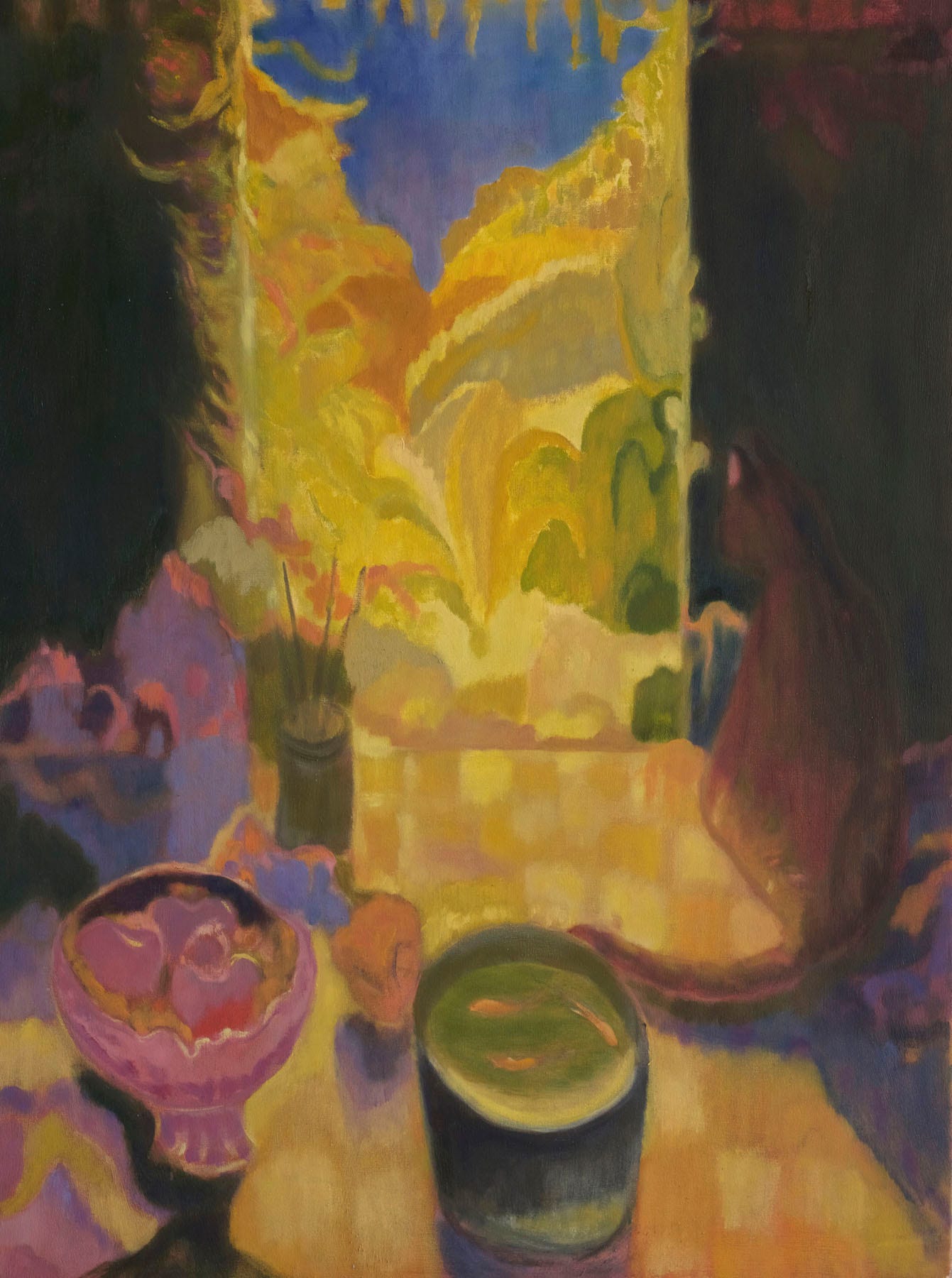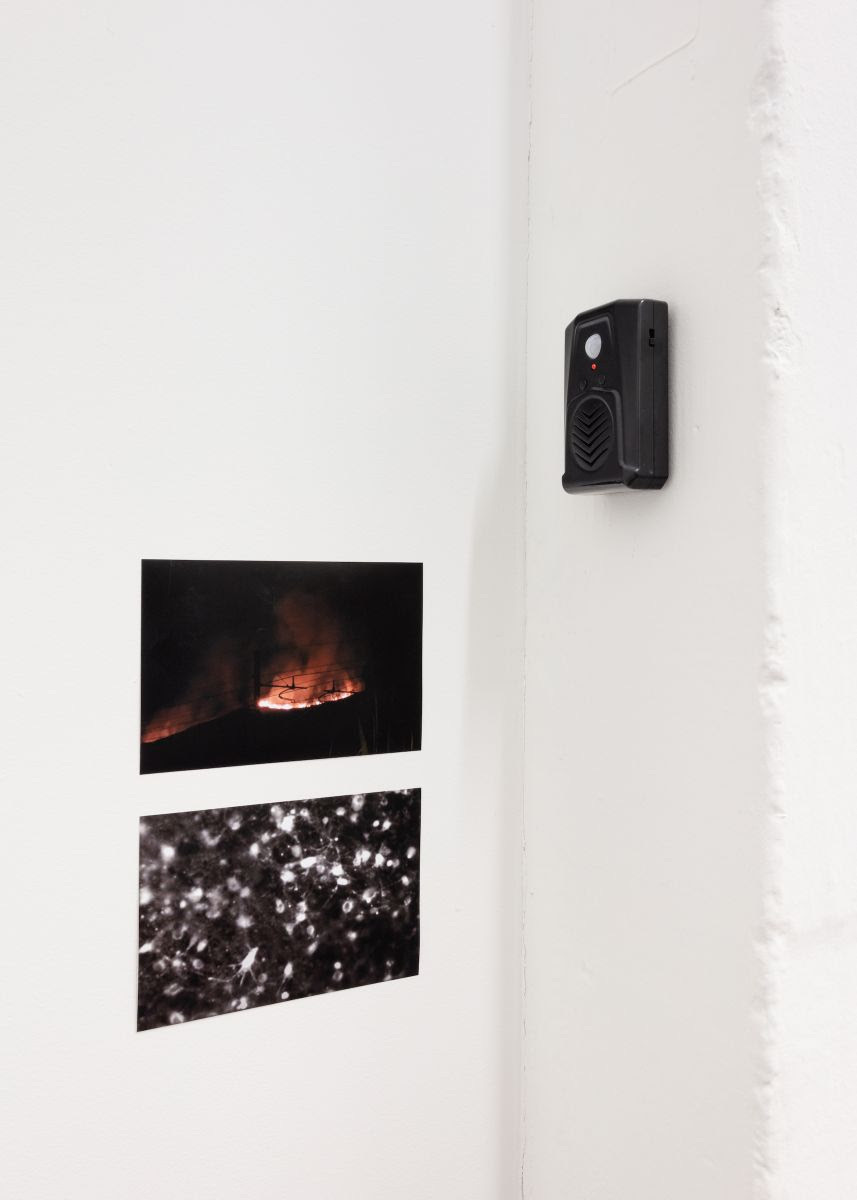For the briefest moment in my writing career, I wrote about music. I always found doing these interviews slightly ironic—I don’t know a thing about music and I lack the refinement to have good taste. And yet, music makes its way into my art writing often. For the Z’otz Collective, I wrote about how the layers of Masakatsu Takagi’s album Marginalia II echoed their hybrid creations. For the CBC, I wrote about Janet Cardiff’s The 40 Part Motet and meditating to the sound of cicadas screams.
A couple of years ago, I wrote an exhibition text for Marlon Kroll that mentioned my tendency to listen to pink noise to better navigate the world. “The world and its constant bombarding of stimuli has become harder to parse, this is where Marlon Kroll’s abstraction comes in handy. It takes the contours of the world and translates them into simple shapes for us to better understand,” I wrote. After reading my text, Marlon added yellow noise to the exhibition. A gentle hum played subtly and constantly in the background, allowing viewers to cancel out the noise and look.
My auditory sensitivity has increased in the last year. After spending most of my time in my apartment, where all I hear is the faint moan of traffic and the occasional podcast, the sounds of being in public overwhelm. Certain tones create a feeling of inescapable itchiness. Other times, it feels like I’m in an echo chamber, the cacophony of street life becomes so loud I can’t concentrate on the conversation at hand. The elimination of the visual element of speech makes things trickier, it feels like all sounds have become louder minus people talking. I find myself mispronouncing simple words and slipping back into a speech impediment I had as a child. I am starting to notice how my year of quiet has subtle reverberations.
When I interviewed Darby Milbrath for the newsletter a couple of weeks ago, she stated how she listens to horror movie soundtracks when she paints—allowing the dramatics of the score to become embedded in the canvas. When I heard her say this I was elated, it made perfect sense to me that the soundtrack for Darby’s work would be intense, suspenseful, and eerie. For the first time, I really understood how a painting could have a sound.
In the brief window that galleries were open in the last month, I made my way to Franz Kaka to see Mist, Foam, Drainage Ditch, organized by Laurie Kang. “The works in this show encircle the body. They are not the body, but the around of it. Cleaved words build elusive worlds, foodstuffs regurgitate ancestry, viscera are worn, images bear corporeal transference, surfaces are flesh, sound infects,” the exhibition text reads. Sound infects. That’s exactly how I feel about the nature of sound: inescapable, loud, indecipherable. Maybe that’s why I gravitate to museums and galleries, where the status quo is hushed tones. At Franz Kaka that day, Rosa Aiello’s sound art invaded the space: abrupt words followed me around the gallery, like a discombobulated audio recording you listen to when learning a new language. But the voice didn’t bother me, I waved my face in front of the motion sensor in anticipation of the next word. The consistency and clarity of the tone soothed.
Now that it’s spring, sounds of nature, of things coming alive, are returning and I’m starting to feel a bit calmer. The elated chirps of birds, waves crashing, children playing outside, it all sounds like love. If you need any proof of my own love, Keiran solely listens to the country music radio station—the least subtle of all music— and it doesn’t bother me at all when I’m with him.
I made a playlist compiled of some of my favourite (mostly instrumental) music that soothes.
Read Marlowe Granados on the despair of writing, which feels relevant to all forms of art-making.
Tomorrow at 12:30 EST, I will be in conversation with Hangama Amiri about her current show at Towards Gallery. RSVP here.







